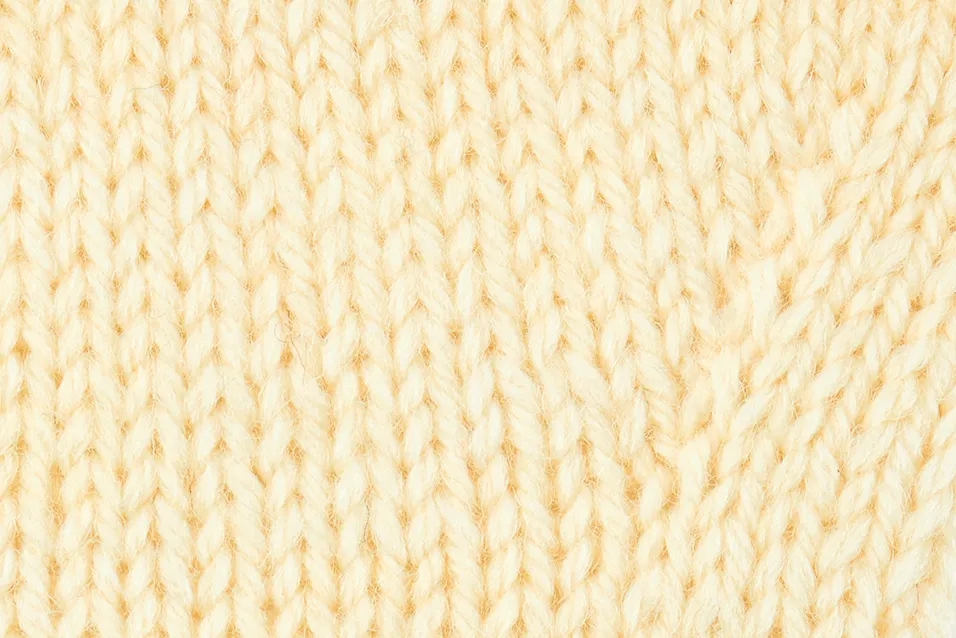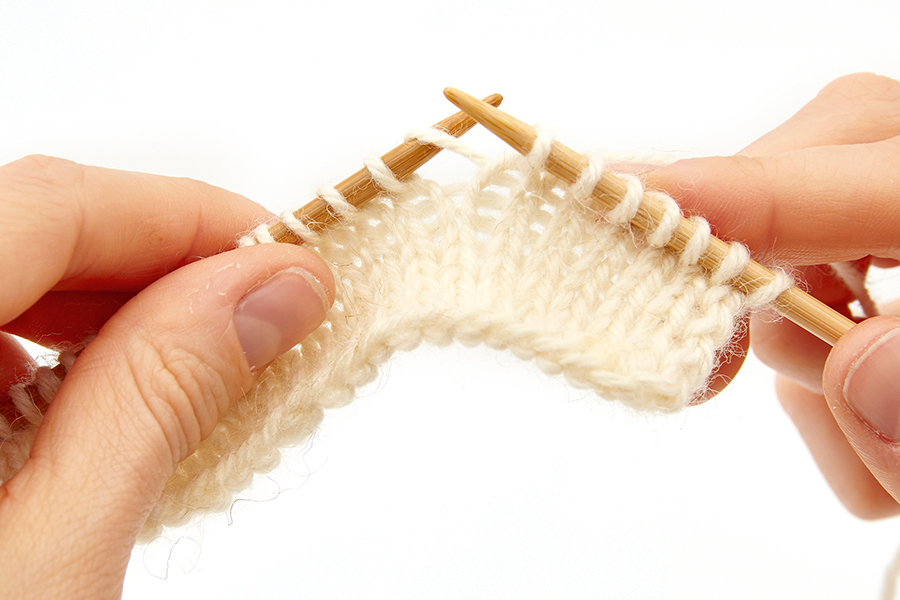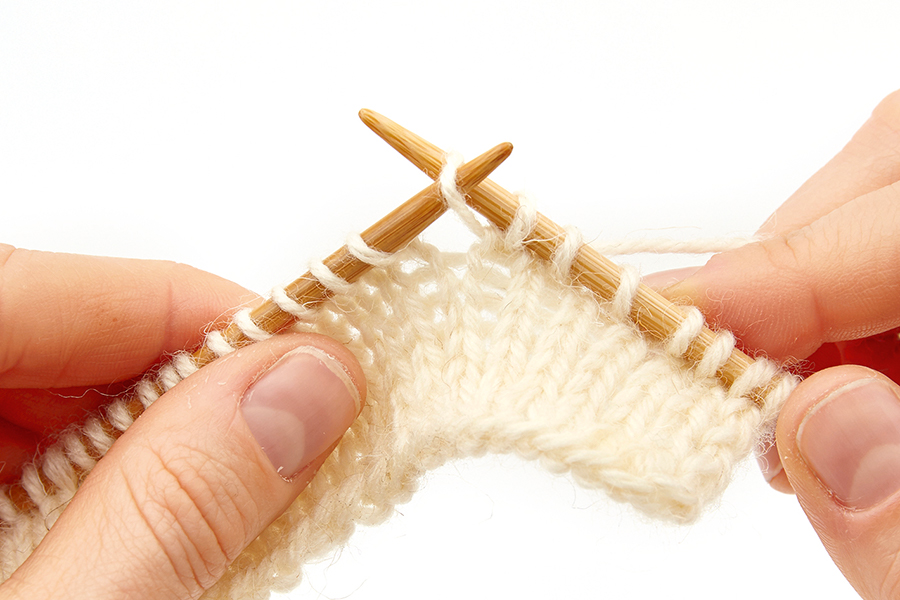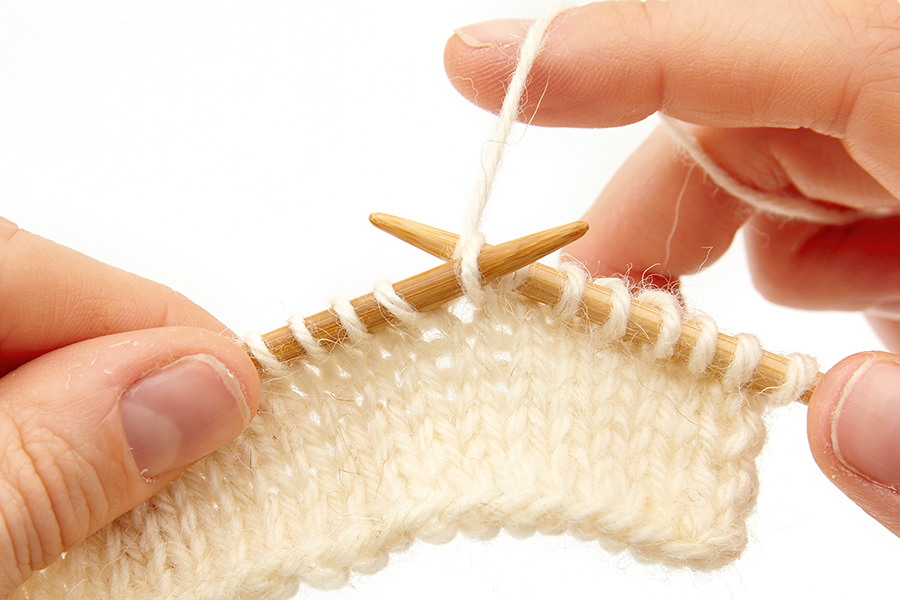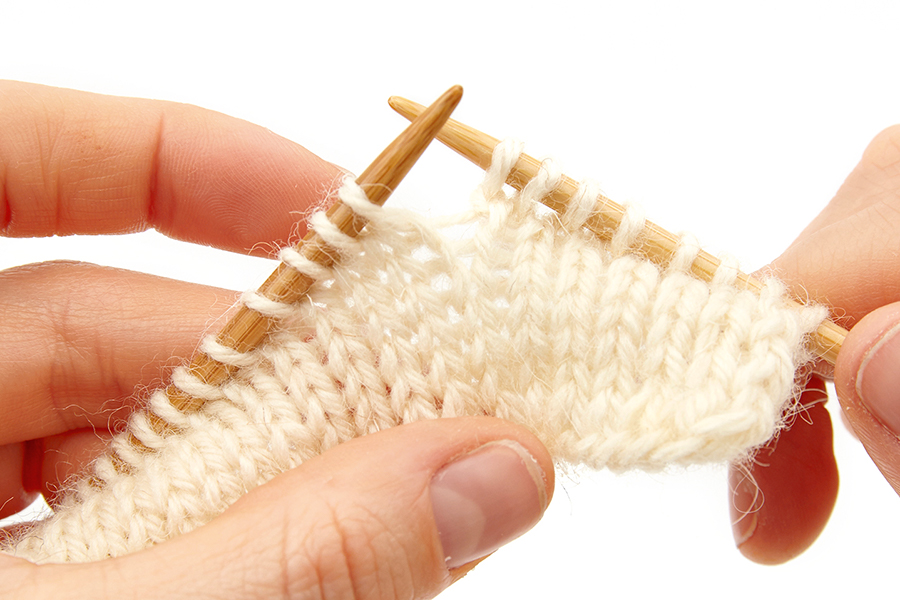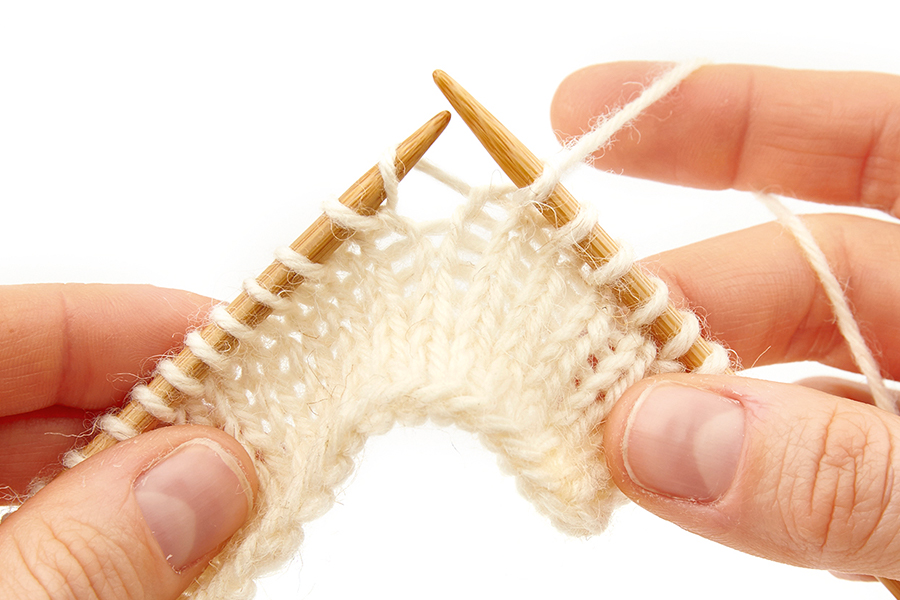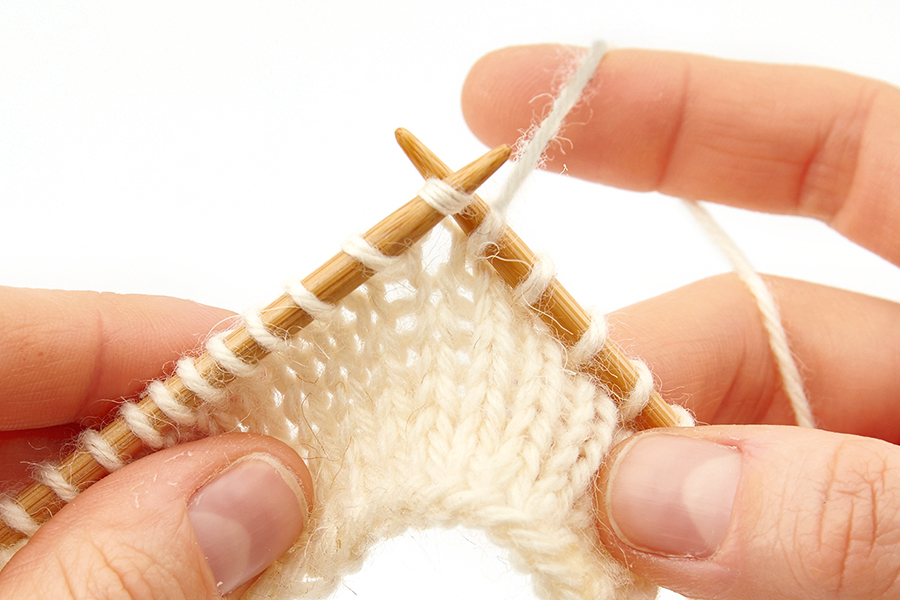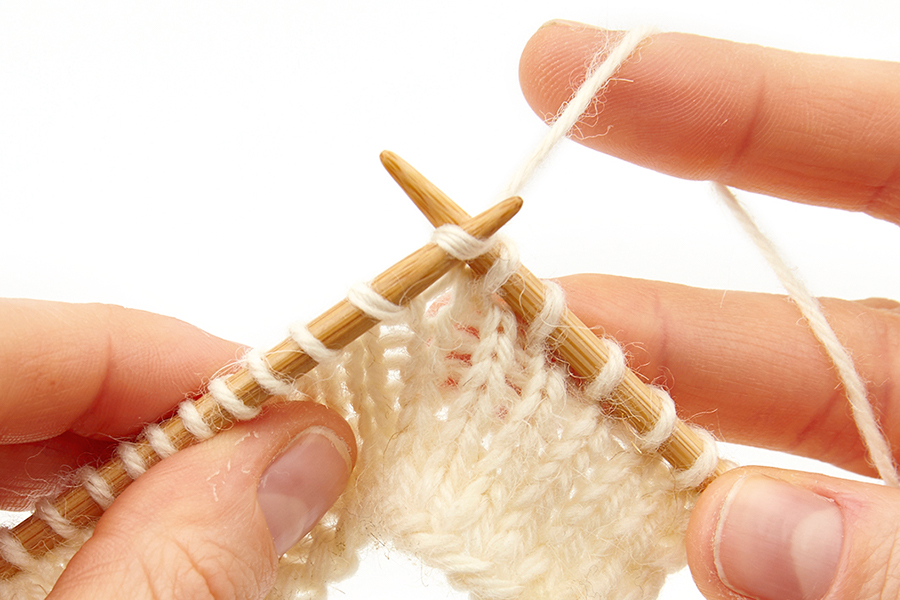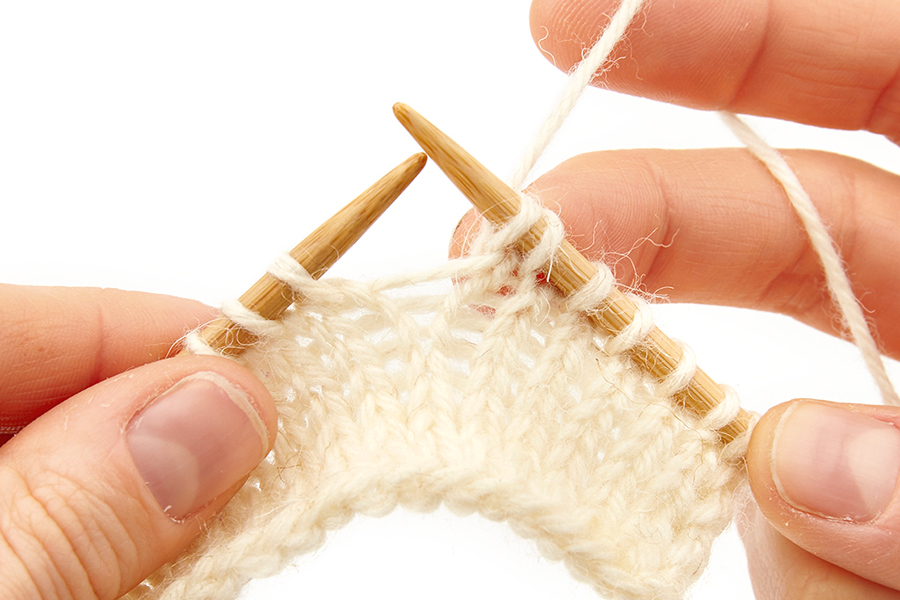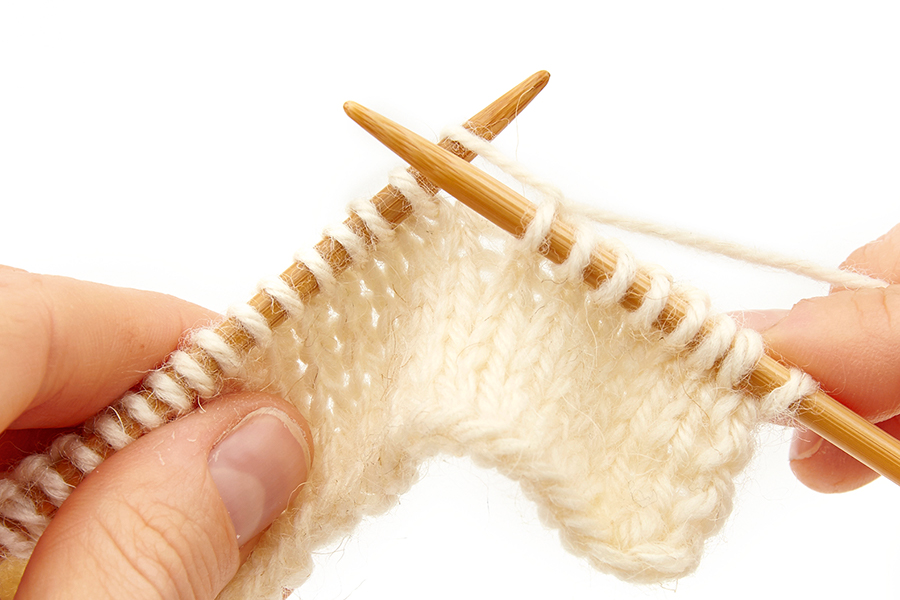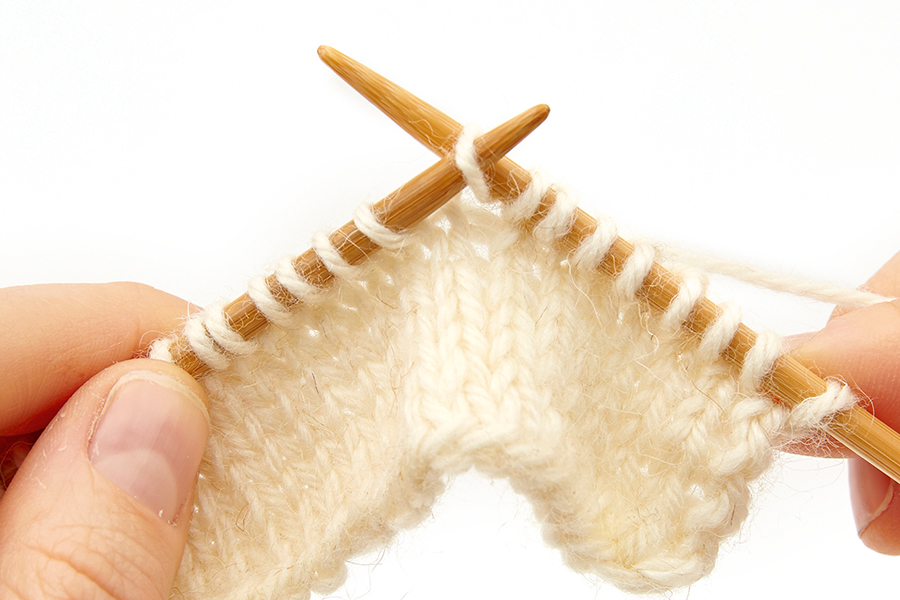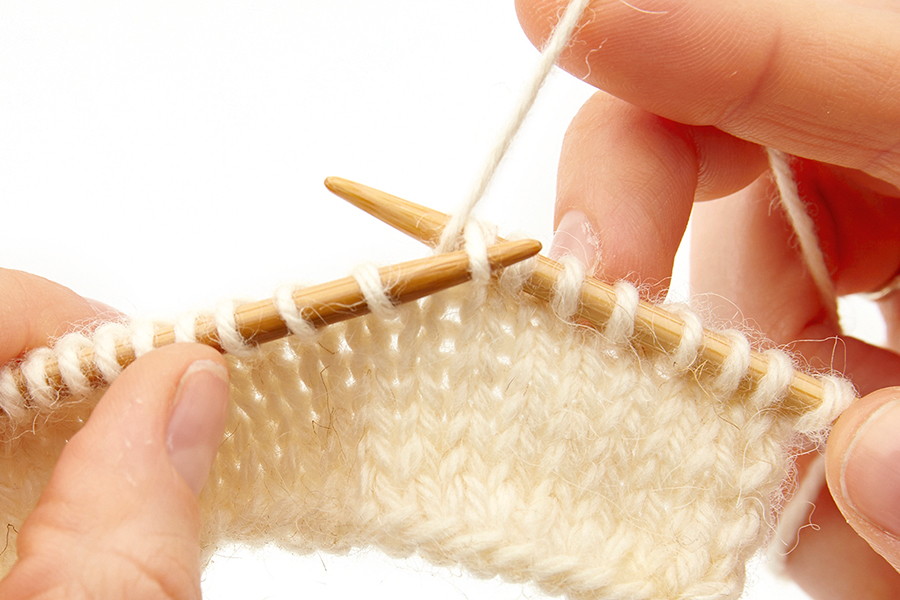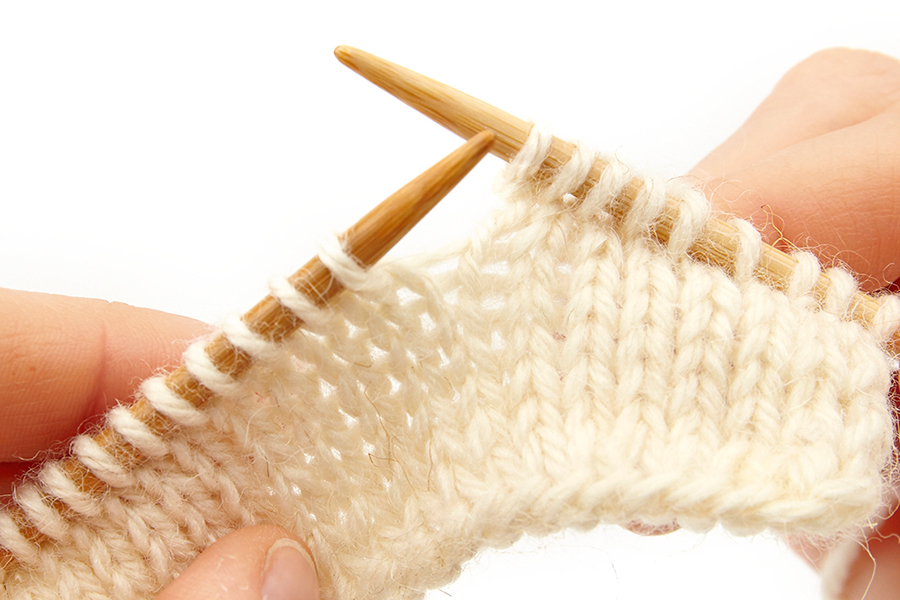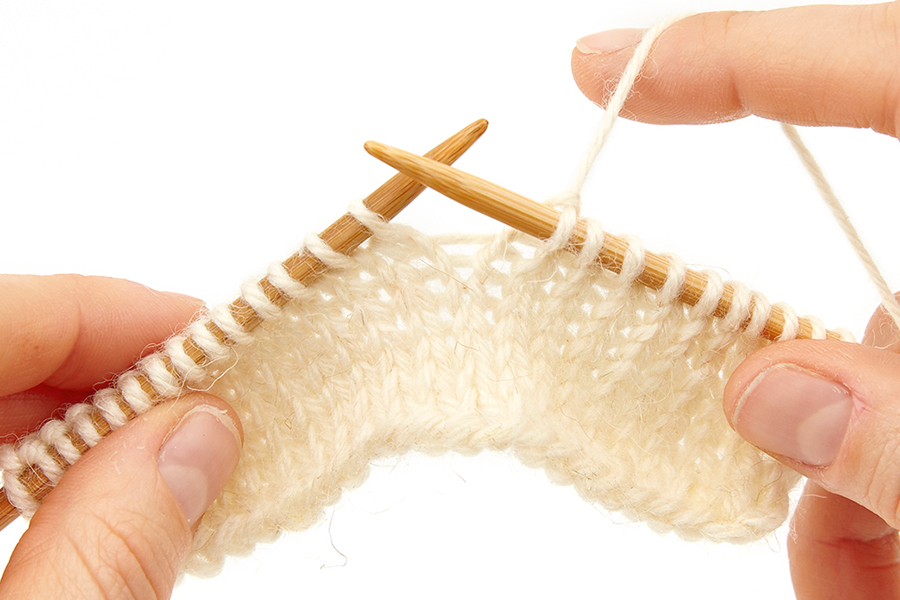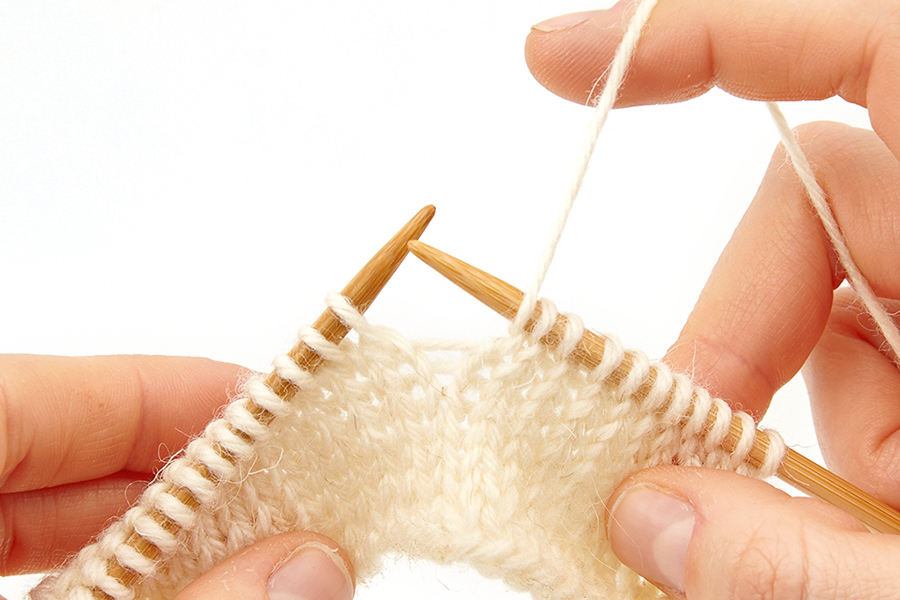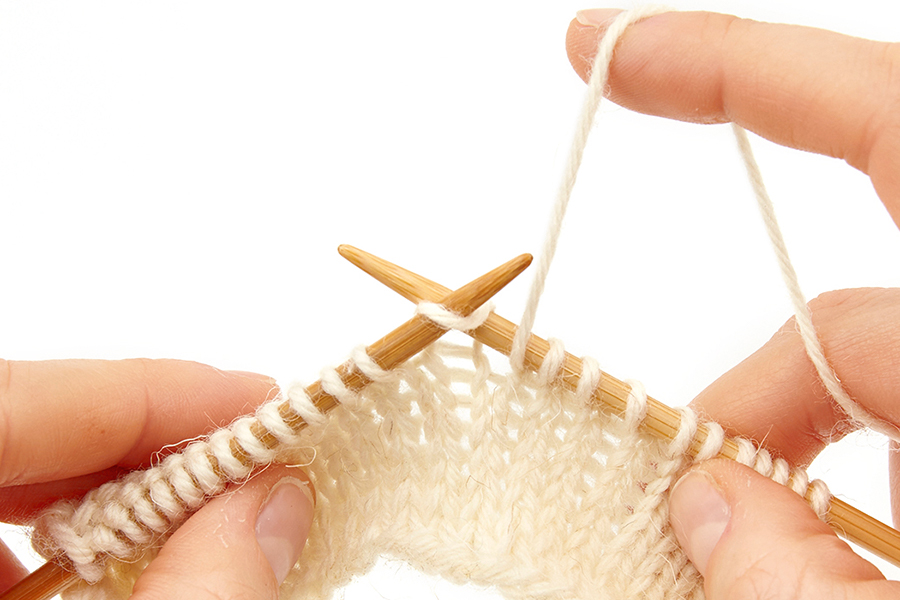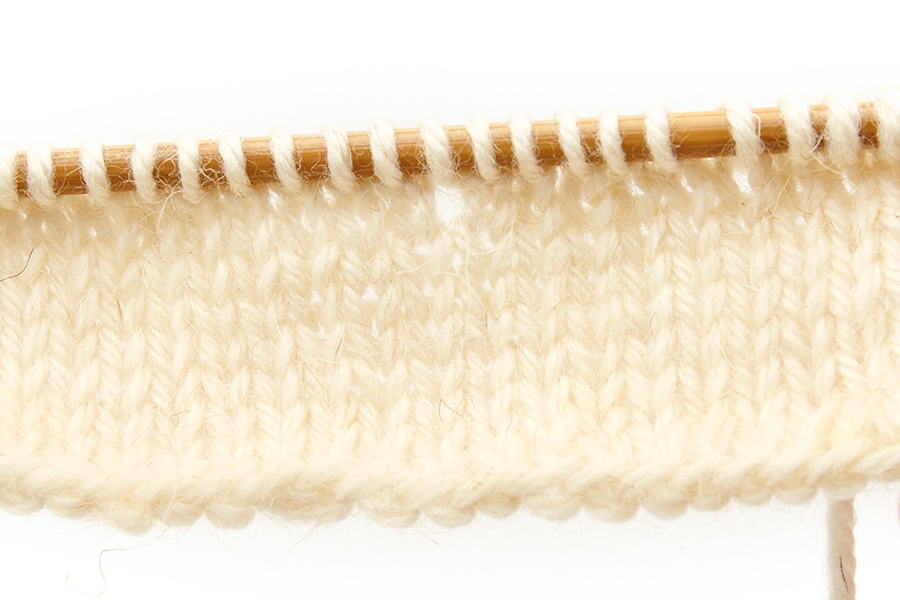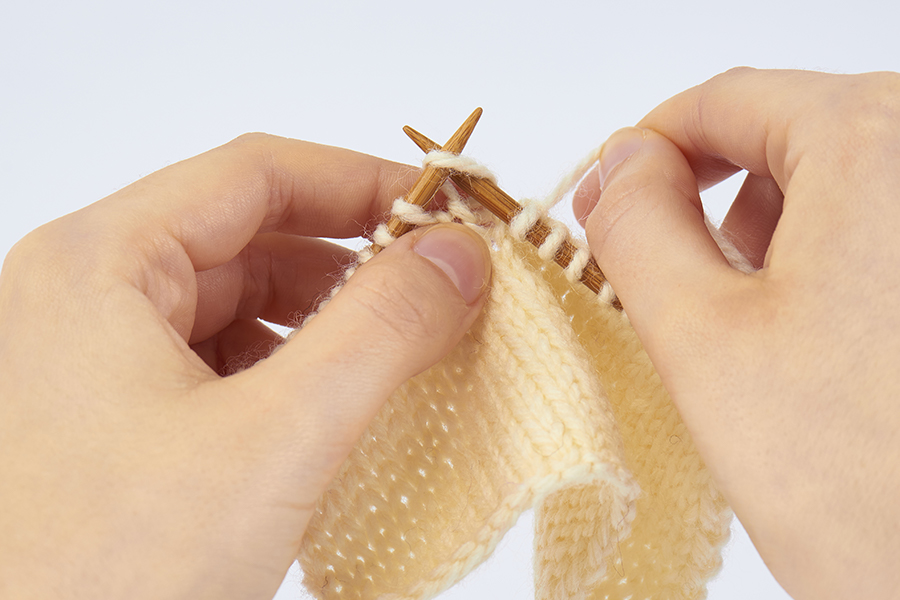There are many ways to increase stitches in knitting, just as there are with how to decrease in knitting. All of them add new stitches to those already on the needle, making your knitting wider, as Jim Arnall-Culliford explains below.
Here are the stitches you'll learn in our guide on how to increase stitches in knitting:
Left leaning increases
Right leaning increases
Decorative increases
How to increase stitches in knitting
Single increases (such as kfb and M1R) are the most commonly used. This is when two new stitches are worked into one existing stitch or you work into the strand lying between two stitches.
Sometimes patterns may require double increases, where you work three new stitches into one existing stitch.
You might feel a little overwhelmed by how many methods there are to increase stitches in knitting, but the main difference between all of the variations is whether you knit or purl, or lean the stitches to the left or right.
These subtle alterations are what makes all the difference to the overall knitted fabric.
Increases are often used to shape items such as garments, but they can also be used in a decorative manner.
The yarn over (yo) creates a hole in the fabric and is mostly used in lace knitting. Kfb (knit front and back) creates a small bump that looks like the bump of a purl stitch, but can be hidden in the surrounding pattern.
How a stitch pattern looks can be drastically altered by the knitting increase method you use. You might find that one increase works well with a particular pattern while another does not.
This is important when shaping garments as one type of technique can look quite obvious in the finished garment, while another will blend in more subtly.
Patterns usually say the increase they wish you to work so it helps to have a few at the ready.
How to add a stitch in knitting with M1
M1 simply means 'make one', or increase a stitch, and typically refers to the M1L (make one left) or M1R (make one right) knitting increase methods.
M1L tends to be thought of as the default M1 stitch, but if the pattern doesn't specify which to use you can choose whichever one you prefer – or another method entirely!
Be aware, though, that M1L and M1R lean in different directions, the former to the left and the latter to the right.
You might not mind which way your increases lean, but for some patterns it can have an impact on the overall effect.
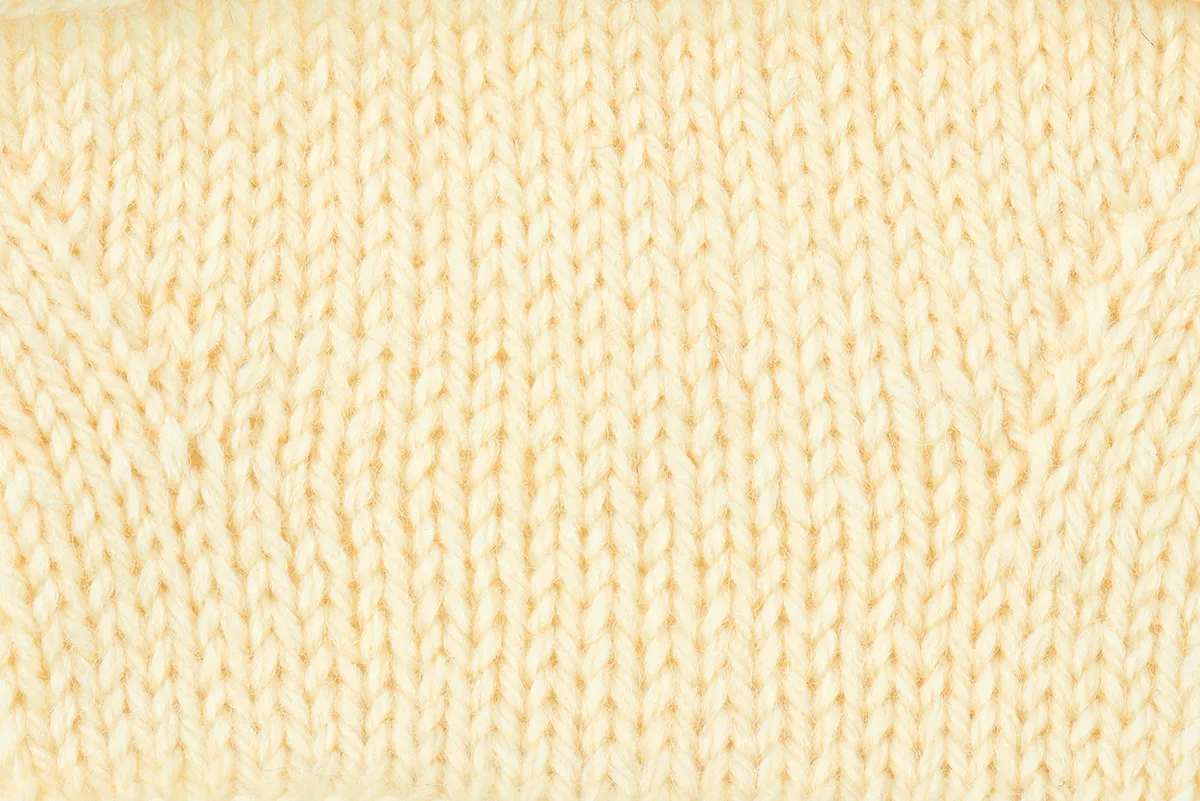
M1L knitting increase (make one left)
This method makes one new stitch by picking up the strand between two stitches on the previous row. It's called M1L (make one left) due to it leaning to the left, but it's also known simply as M1.
It’s essential that you pick up and knit the strand the right way round otherwise you’ll end up with a hole in your work.
